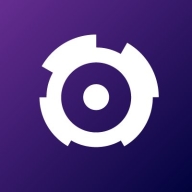

ITRS Geneos and Elastic Observability are competing in the IT monitoring and observability space. Elastic Observability has the upper hand due to its comprehensive features and broader integrations.
Features: ITRS Geneos is praised for real-time monitoring, complex event processing, and strong user satisfaction. Elastic Observability offers extensive data analysis, diverse visualization tools, and support for multiple data sources.
Room for Improvement: Users suggest ITRS Geneos improve ease of use, offer more customization options, and enhance integration capabilities. Elastic Observability users want better support for large-scale data, improved search functionality, and more efficiency in data handling.
Ease of Deployment and Customer Service: ITRS Geneos has a smooth deployment process and strong customer support. Elastic Observability users find deployment more complex but benefit from responsive support.
Pricing and ROI: ITRS Geneos is favored for competitive pricing and strong ROI. Elastic Observability is seen as more expensive but valuable for its advanced features. Users of both products report satisfaction with ROI, noting that Elastic Observability's broader capabilities justify its higher price.


Elastic Observability is primarily used for monitoring login events, application performance, and infrastructure, supporting significant data volumes through features like log aggregation, centralized logging, and system metric analysis.
Elastic Observability employs Elastic APM for performance and latency analysis, significantly aiding business KPIs and technical stability. It is popular among users for system and server monitoring, capacity planning, cyber security, and managing data pipelines. With the integration of Kibana, it offers robust visualization, reporting, and incident response capabilities through rapid log searches while supporting machine learning and hybrid cloud environments.
What are Elastic Observability's key features?Companies in technology, finance, healthcare, and other industries implement Elastic Observability for tailored monitoring solutions. They find its integration with existing systems useful for maintaining operation efficiency and security, particularly valuing the visualization capabilities through Kibana to monitor KPIs and improve incident response times.
ITRS Geneos is a real-time monitoring tool designed for managing increasingly complex, hybrid and interconnected IT estates.
Built with financial services and trading organisations in mind, it collects a wide range of data relating to server performance, infrastructure, trading, connectivity and applications, and analyses it to provide relevant information and alerts in real time.
Geneos can give full stack visibility across highly dynamic environments and presents all the information through a single pane of glass and its configurable and customisable dashboards provide end-to-end visibility to both technical and business users.
For more information, please visit https://www.itrsgroup.com/products/geneos
We monitor all Application Performance Monitoring (APM) and Observability reviews to prevent fraudulent reviews and keep review quality high. We do not post reviews by company employees or direct competitors. We validate each review for authenticity via cross-reference with LinkedIn, and personal follow-up with the reviewer when necessary.